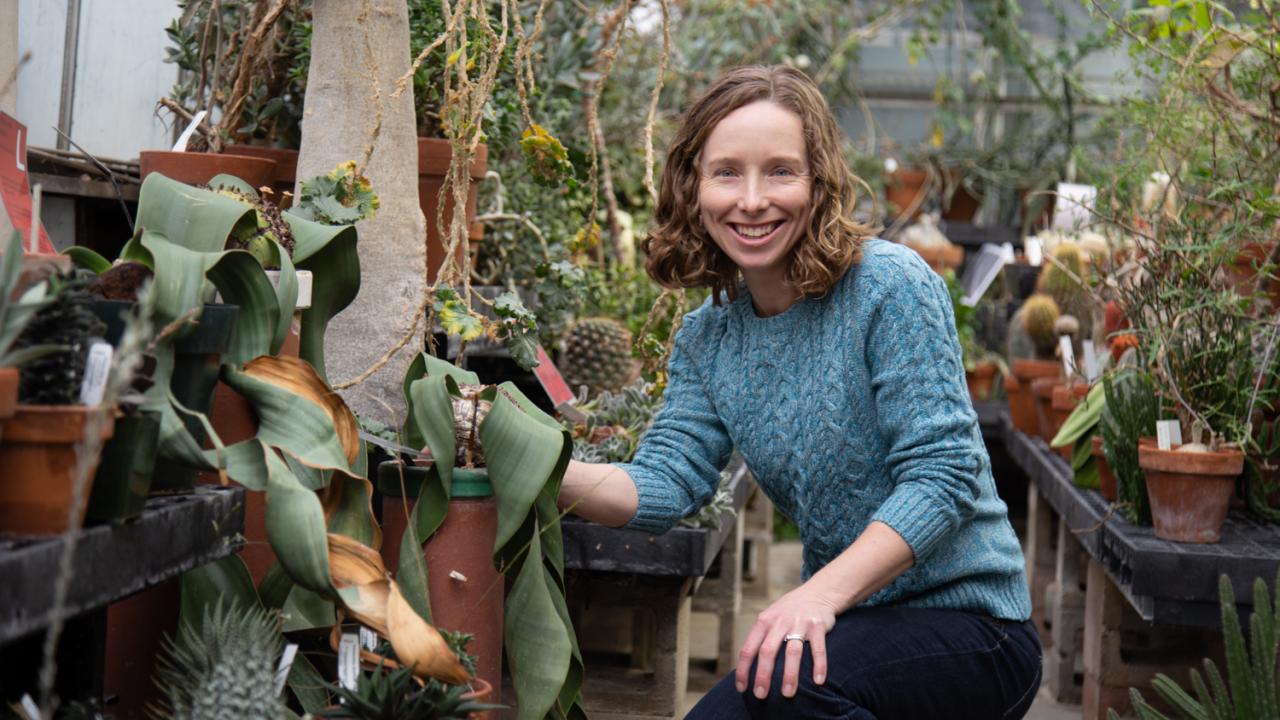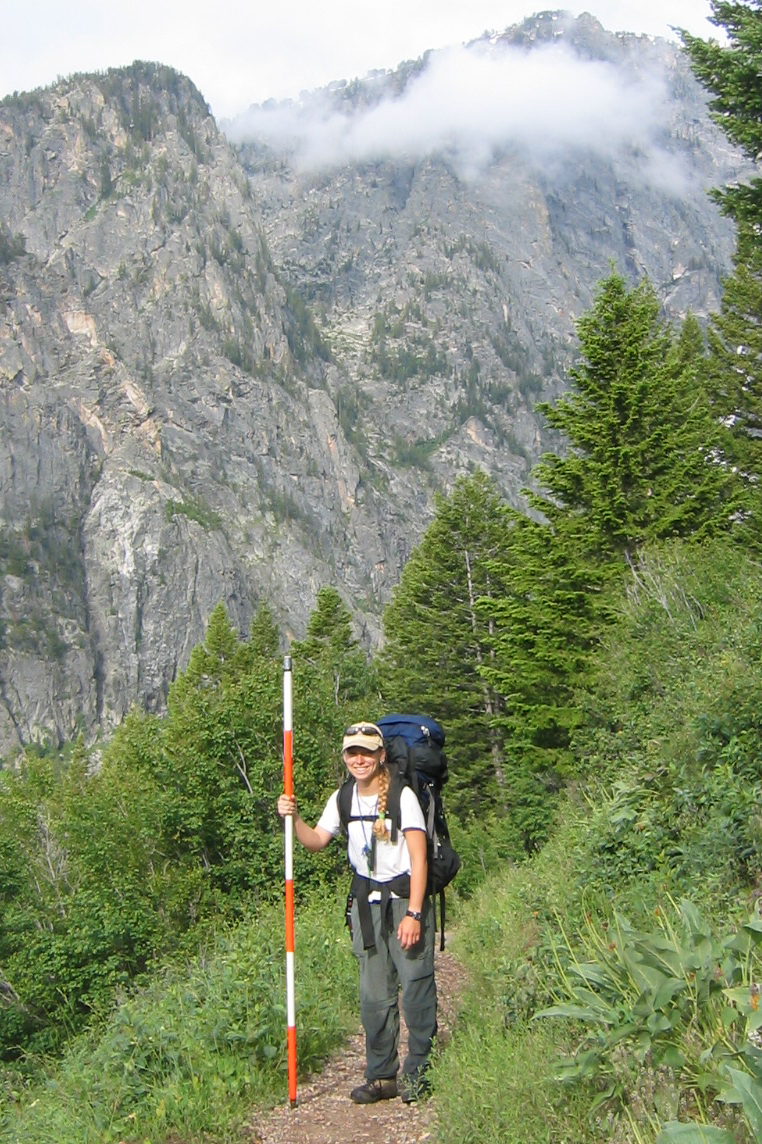
Discovering Curiosity: Uncovering the Hidden World of Plants with Jennifer Gremer
Quick Summary
- Jennifer Gremer combines past and present data to investigate how climate change influences wildflower germination
- Over the course of her career, she's investigated cryptic, belowground behaviors of plants
- With a $2 million grant from the NSF, Gremer hopes to find ways to predict how wildflowers will react to future climate conditions
Assistant Professor Jennifer Gremer showed an interest in plant life at an early age, but her path to scientific research wasn’t straightforward. She dabbled in many fields related to plant sciences before joining the Department of Evolution and Ecology, from working as an interpretive ranger in Yosemite National Park to performing botanical surveys for the Greater Yellowstone Ecosystem.
“When I think about my path to becoming an assistant professor at UC Davis, it makes a lot more sense in hindsight than it did moving forward,” said Gremer. “There were a lot of these branching points but I just kept getting pulled back to scientific research.”
These experiences sowed the seeds for Gremer’s current research into how climate change influences the life history of wildflowers. Recently, she was awarded a $2 million grant from the National Science Foundation to study jewelflowers, a diverse group of California wildflowers spread across the state. She and her co-principal investigators are working to unify past and present data to predict how jewelflower species will react to future climate conditions.
While the path to Gremer’s UC Davis position was winding, it has roots in her childhood.
“My parents tease me about how when I was five-years-old and playing soccer, I spent more time picking daisies than playing soccer,” she said.

Exploring the weird world of plants
Gremer cultivated her interest in plants during her undergraduate years at UC Santa Barbara, where she majored in environmental studies. During one of her introductory classes, a professor showed snippets from the David Attenborough documentary The Private Life of Plants.
“There’s this cool example of these orchids that mimic a female wasp and so the male comes in thinking it’s about to copulate with a female and it ends up pollinating a flower,” recalled Gremer.

It was a watershed moment, one that solidified Gremer’s growing fascination with the weird world of plants. She enrolled in plant ecology courses and quickly caught the research bug after assisting a graduate student with root growth research. Between her sophomore and junior years, she worked as an interpretive ranger intern in Yosemite National Park’s Tuolumne Meadow, where she led tours, scaled mountain peaks and learned about botany and geology.
“As an interpretive ranger, your job is essentially to tell the public about the park,” said Gremer. “If you communicate the value of this resource, then the idea is that the public will value it and want to continue to protect it.”
The internship helped Gremer develop her communication skills and instilled within her a deep love of wild places. The following summer, she attended a field course in Queensland, Australia, where she learned restoration ecology principles and participated in restoration projects in the tropical rain forest.
After graduation, Gremer explored career options outside of academia. She completed restoration ecology internships, worked in a research lab and performed botanical surveys in Wyoming’s Grand Teton National Park and the Bridger-Teton National Forest. She also explored the backcountry of the Greater Yellowstone-Teton Ecosystem, an incredible experience that heightened her desire to become a research scientist.
“In the Tetons, we inventoried plant communities, collecting information which could be used for management and asking research questions,” said Gremer. “I worked out my botanical muscles.”
Beneath the soil, cryptic growth stages
While Gremer enjoyed the post, she had an itch to return to research. She didn’t want to just collect data, she wanted to use it to inform her own research questions and experiments. She applied to graduate school and enrolled at the University of Montana, where she majored in organismal biology and ecology.

For her dissertation, Gremer turned to the hidden world beneath the soil, studying an odd behavior in perennial milkvetch plants. Each year, a certain number of individuals in a milkvetch population disappear belowground, where they survive as roots. This behavior is called prolonged dormancy and Gremer wanted to understand this cryptic stage. Via experiments, she found more milkvetches stayed belowground during warm, dry seasons and that individuals belowground tended to be in weaker condition.
“For the first two years of my Ph.D., I thought, ‘My data must be wrong,’” said Gremer, noting that the findings bucked the hypothesis that a weak plant would prefer the surface, where it could harvest more energy from sunlight.
Gremer thought if the plants were low on some resource, surely it’d be one available in the soil, like nitrogen or phosphorous. After performing some analyses, she found the plants were actually low on carbon, which they usually collect from the air.
“What happens with stored carbon in plants is there are these available compounds like sugars and starch, which plants can use for energy,” said Gremer. “And then, there’s the rest of the carbon, which we usually think of as being locked into structures that aren’t available, for instance, in cell walls.”
Gremer found that dormant milkvetches seemed to be remobilizing their stored carbon sources, metabolizing them into sugars and starches for energy.
“It’s kind of like tearing down your walls or your furniture to feed your furnace,” she said. “This ability to sit out a year and feed the furnace likely allowed them to make it back above ground in later years. We also discovered, using population dynamic models, that this strategy actually buffered individuals from risk and helped stabilize population dynamics.”
A government shutdown and a new direction
After earning a Ph.D., Gremer took a postdoctoral position at the University of Arizona, where she continued trying to link mechanisms of physiological ecology to community dynamics. She also returned to the belowground world of plants, in this case studying soil seed banks of winter annual plants in the Sonoran Desert, where seeds can remain dormant for several years before sprouting, a behavior known as “bet-hedging.” Gremer and her colleagues found that vulnerable Sonoran Desert flower species tended to be more dormant, playing a long game when it comes to persistence in the variable desert environment. For her research, which was published in Ecology Letters, Gremer won the Ecological Society of America’s George Mercer Award.

Following her postdoc, Gremer joined the U.S. Geological Survey as an ecologist. She was about four months into the position when the 2013 U.S. government shutdown occurred. Gremer went on furlough and used the time to apply for different jobs and to explore her new locale in Flagstaff, Arizona. One of the applications she sent in was for her current position at UC Davis.
“If one has to weather a government shutdown, that one was pretty short,” she said. “My heart goes out to all the folks who just went through a much longer one.”
Gremer was surprised and thrilled when she got the call to interview for a faculty position at UC Davis.
“UC Davis is such a hub for ecology,” she said. “It was exciting and even a bit intimidating to be interviewing as an ecologist here.”
She quickly realized that, instead of being intimidating, UC Davis was a wonderfully interactive, collaborative place to study ecology and evolution.
“I have fantastic colleagues and students, who not only make it a fun place to work, but also help me be a better scientist, teacher, and mentor,” she said.
Gremer said she appreciates living in another hot spot of biodiversity, the California Floristic Province, and getting to explore wild places in the Sierra Nevada, the Coast Range and along the Pacific Coast.
